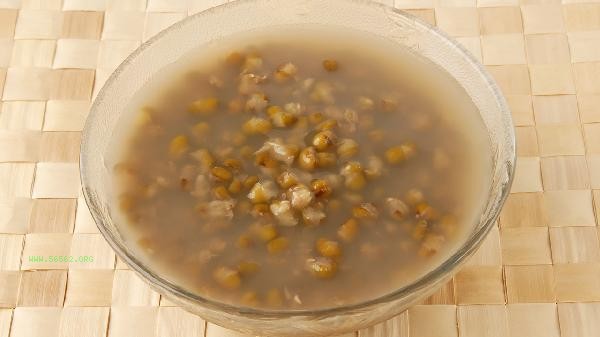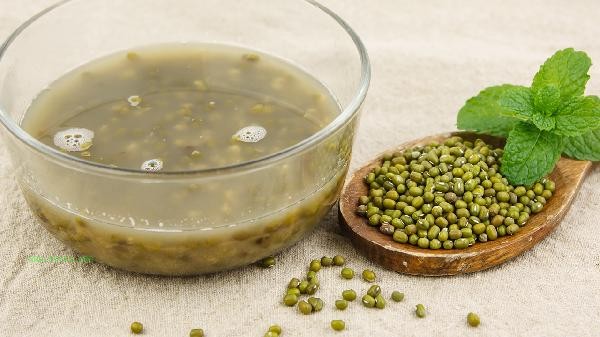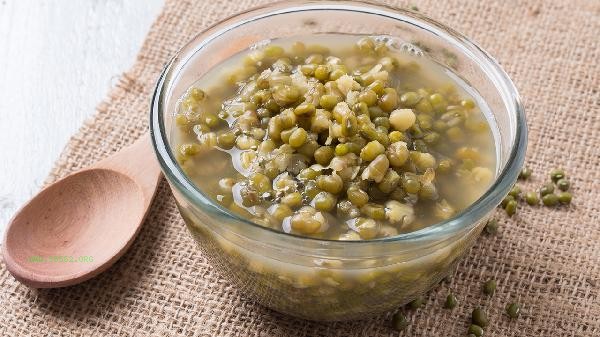The color of mung bean soup can be either red or green, depending on the cooking method and ingredient combination. Traditional mung bean soup is mostly green, but some recipes may appear red. Green color is a common state in mung bean soup, which is related to the color of the mung beans themselves and the cooking time. Green beans contain natural pigments such as chlorophyll on their skin, and short-term cooking can maintain their green color. Using fresh mung beans, controlling the heat, and avoiding prolonged high-temperature stewing can all help preserve the green color. Green mung bean soup has a refreshing taste and is suitable for cooling off and quenching thirst in summer. Its nutritional components are well preserved, and it has a high content of vitamin B and dietary fiber. Adding a small amount of alkali or baking soda may deepen the green color, but it may damage some nutrients. Red mung bean soup is usually caused by oxidation reactions or special ingredients. Long term high-temperature stewing can oxidize the polyphenolic substances in mung beans, causing the soup color to gradually turn red. Some regions deliberately add red ingredients such as red dates and goji berries to color the soup, making it appear reddish brown. Red mung bean soup has a richer taste, and some people believe that it has a better effect on removing dampness. From a nutritional perspective, some antioxidant substances in the red soup may be lost due to oxidation, but the iron content may increase due to ingredients. Traditional Chinese medicine theory suggests that red mung bean soup is more suitable for people with weak and cold constitution to drink. Regardless of the color of mung bean soup, it has the effect of clearing heat and relieving summer heat. It is recommended to choose the cooking method based on personal constitution and taste. People with weak digestive system should avoid drinking chilled mung bean soup on an empty stomach. Attention should be paid to the control of sugar addition during daily consumption. diabetes patients can choose sugar substitutes or drink the original soup directly. Green bean soup should not be consumed together with warm tonics to avoid affecting its efficacy. When storing, it should be refrigerated and consumed as soon as possible. Overnight mung bean soup may produce nitrite.











Comments (0)
Leave a Comment
No comments yet
Be the first to share your thoughts!